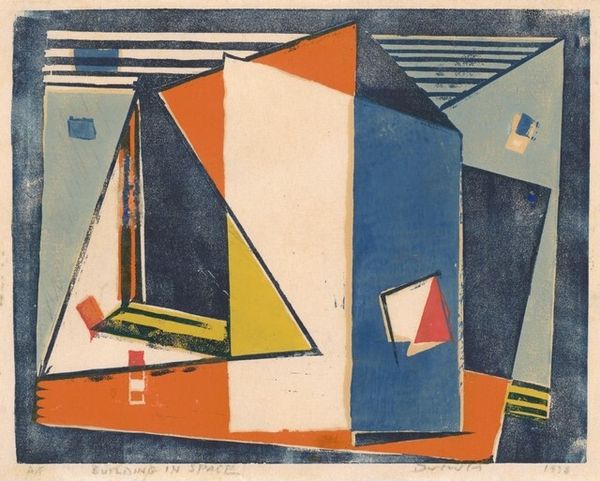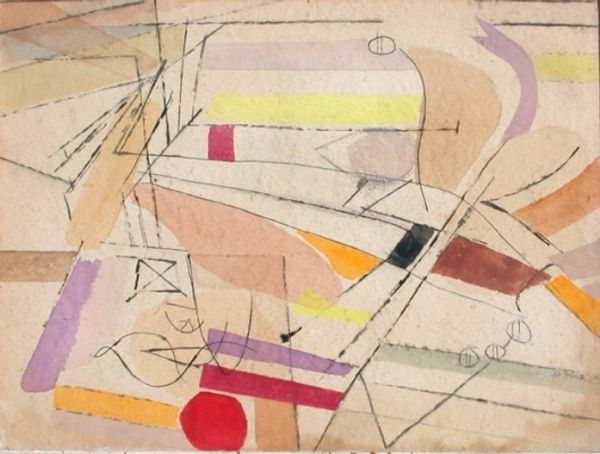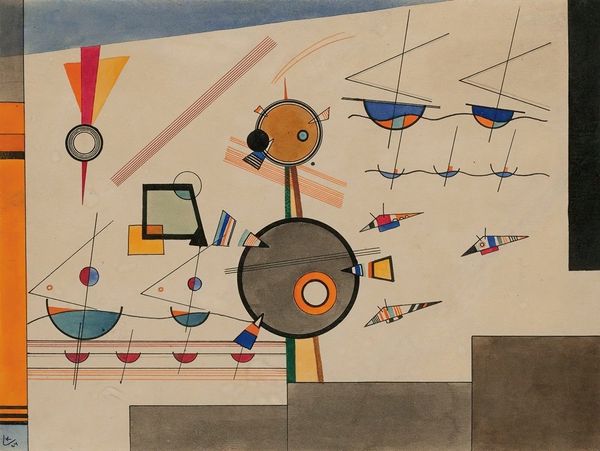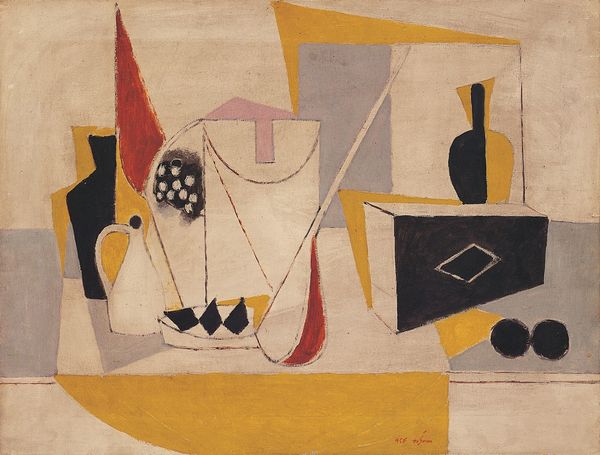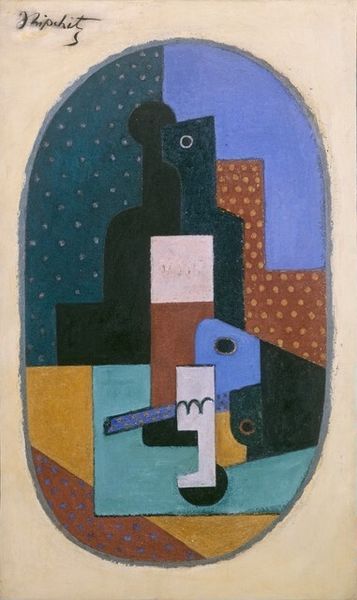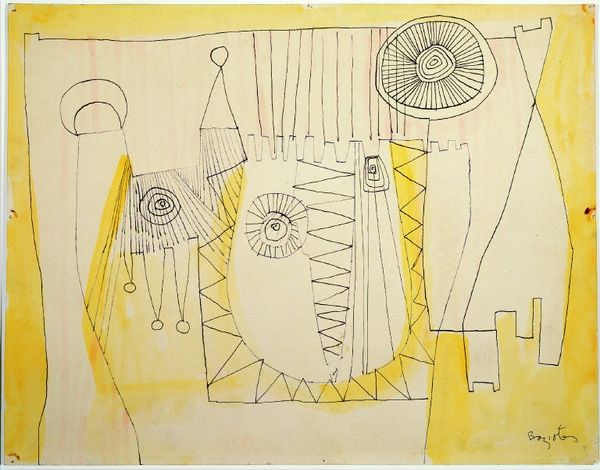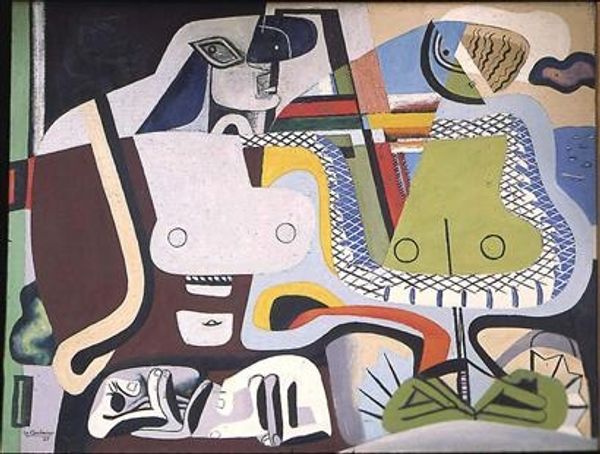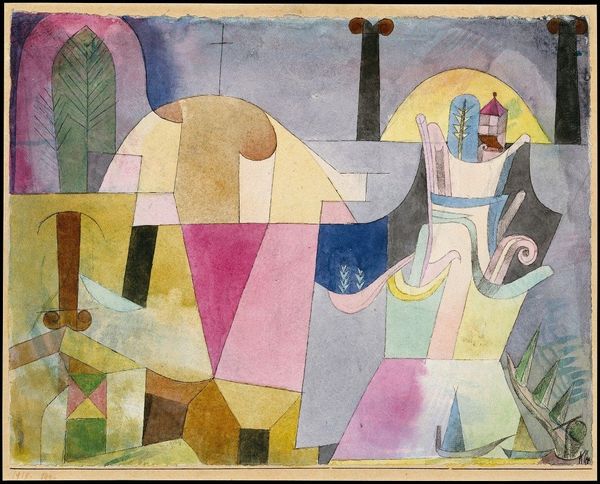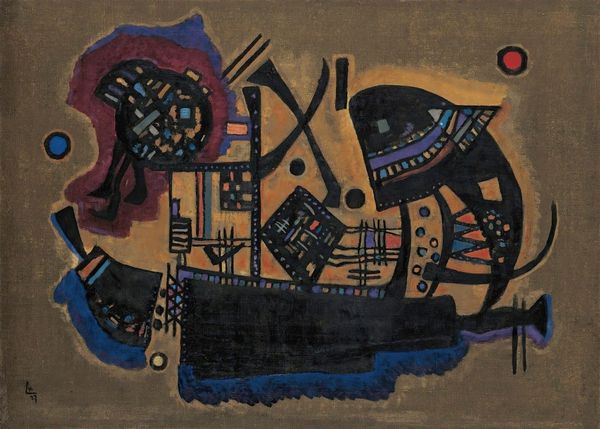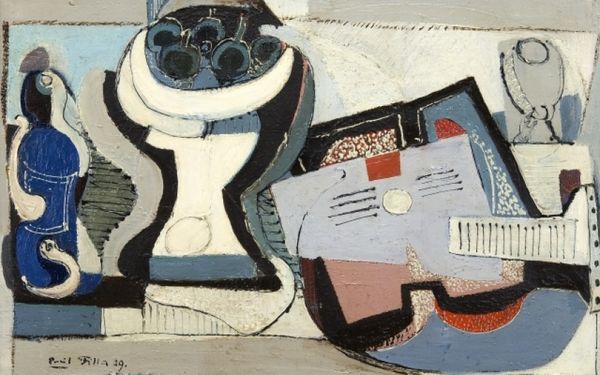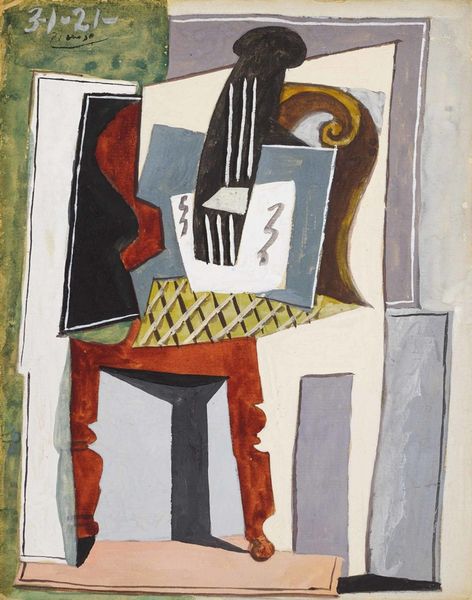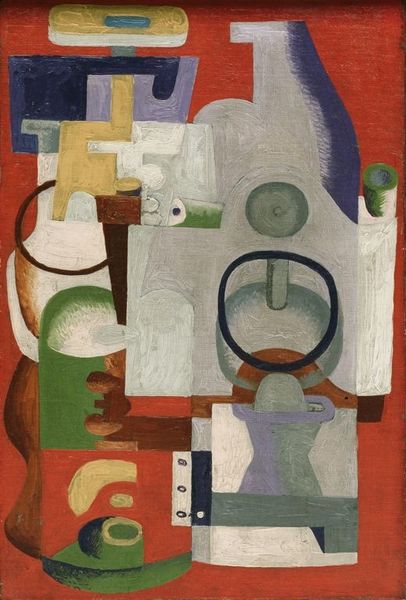
painting, gouache
#
cubism
#
water colours
#
painting
#
gouache
#
geometric
Dimensions: 97 x 130 cm
Copyright: Pablo Picasso,Fair Use
Editor: So, here we have Pablo Picasso’s "Still Life with a Mandolin," created in 1924, using gouache and watercolor. It has such an interesting way of abstracting objects! How would you interpret this work? Curator: Well, considering Picasso’s socio-political context, we see the "Still Life" emerging from a post-war era grappling with fractured realities. How does cubism, particularly in still life, serve as a mirror reflecting that instability, that fragmentation, not only of the physical world but also societal structures? Notice the geometric forms and fractured perspectives - it moves away from traditional, illusionistic representation, towards an emphasis on the canvas as a constructed surface. How do you feel that the choice of humble objects—like a mandolin—speaks to the political undercurrents of the period? Editor: I guess it democratizes art, moving away from depicting only the wealthy and powerful! It is more inclusive? Curator: Exactly! The depiction of everyday objects brings art closer to the masses. Considering institutions, how do you think a piece like this challenged the academic art world and traditional notions of beauty prevalent in museums and galleries at that time? Editor: By being so different it likely sparked outrage and challenged people's perception of what art *should* be. It helped push the art world towards different definitions of beauty and meaning. Curator: Precisely. This challenged not just aesthetic tastes but also who got to define 'high art'. What’s changed? Which institutions still uphold this idea? What new institutions have challenged these art biases and promoted greater inclusivity in the art world? Editor: So much to think about! I hadn't considered the wider impact. Looking at "Still Life with a Mandolin" is really interesting to see the influence of history, culture, and museums.
Comments
No comments
Be the first to comment and join the conversation on the ultimate creative platform.

